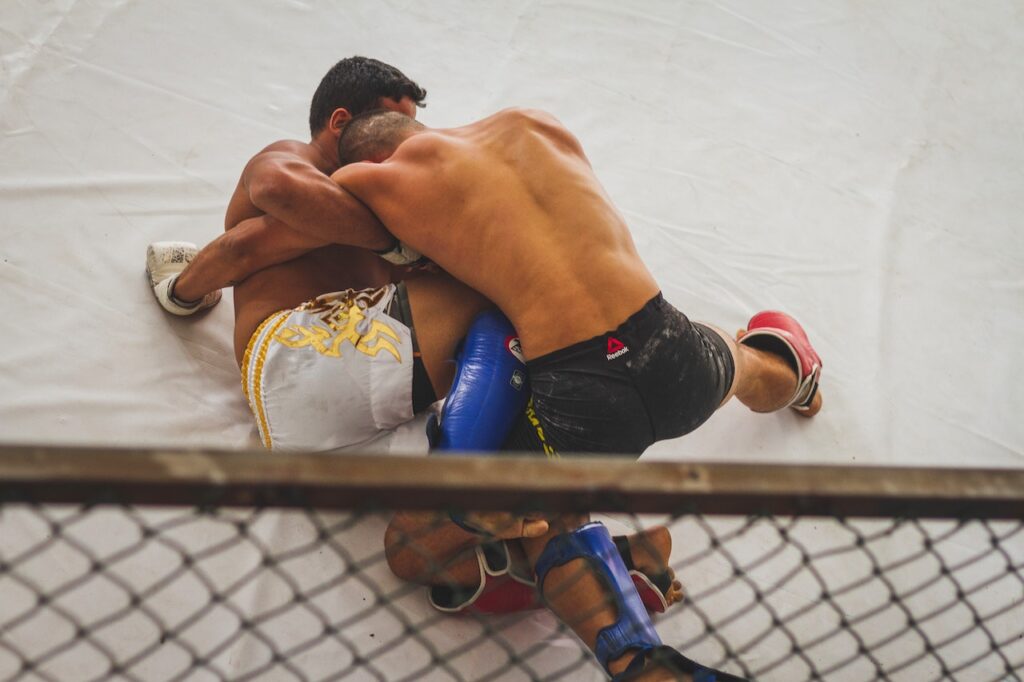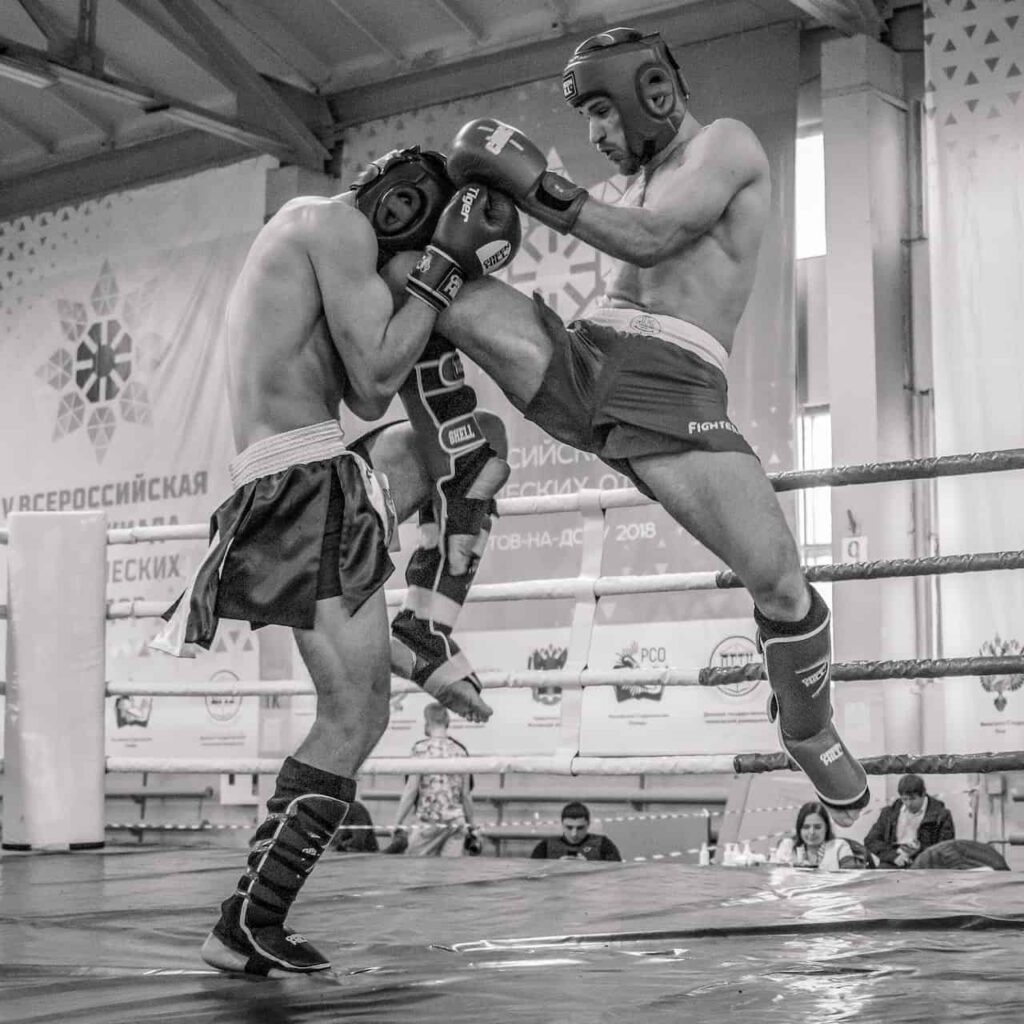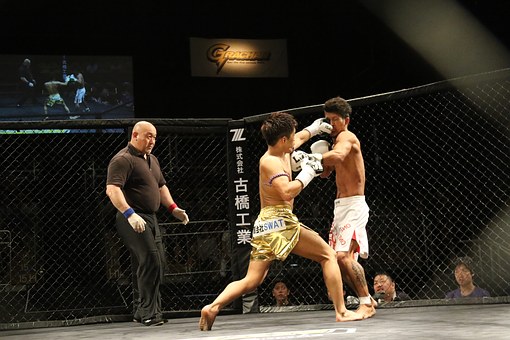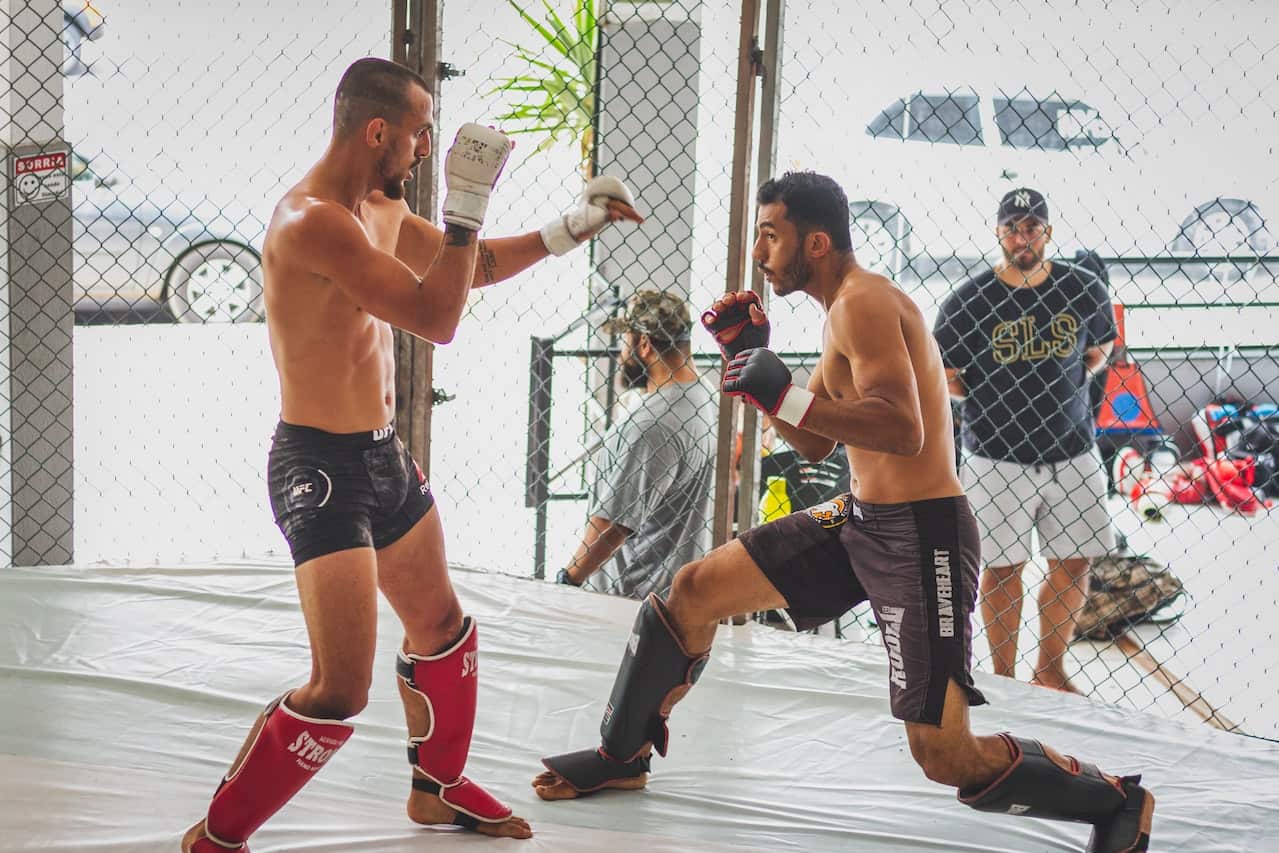Kickboxing and MMA (Mixed Martial Arts) can look very similar to those who do not follow combat sports.
But to martial arts and combat sports fans, there is a major difference between kickboxing and MMA and that is:
Kickboxing does not include ground fighting or submissions
While MMA, or Mixed Martial Arts includes a wide variety of takedowns (from Judo, Wrestling, BJJ) and a variety of submission techniques such as chokes and joint locks to make an opponent tap out, pass out or have their joints snapped.
In this article we discuss some of the other main differences between kickboxing and MMA which include:
- origins and history i.e kickboxing has been around longer than MMA; training
- Techniques – apart from ground fighting we discuss the difference between kickboxing and MMA in the stand up phase
- As well as rules and regulations i.e the ‘ring’ and gloves they use are very, very different also
But it is also interesting to look at the similarities also between mixed martial arts and kickboxing and how kickboxing also has become a staple in the training of MMA (just look at Khabib’s gym – American Kickboxing Academy which has also produced other UFC Champions)
So let’s get into it!
The MAIN Difference Between Kickboxing and MMA
While there are several differences between mixed martial arts and kickboxing, the main difference would be that kickboxing focusses on stand up striking only.
While MMA includes a lot of stand up grappling (clinch), takedowns (throws, trips, dumps, sweeps) and ground fighting and submissions (pins, holds, chokes and joint locks).

Both kickboxing and MMA start standing but when a fighter is put to the ground in kickboxing, the referee stops the fight and starts the fight again once both fighters are on their feet.
In MMA if a fighter gets rocked with a punch or kick and hits the ground, the fight continues.
But the referee is careful to observe if the fallen fighter is out cold and will stop the fight there and then if necessary declaring a KO.
So this is the MAIN difference between kickboxing and MMA but there are also other very significant differences which we get into more below.
History and Origins
Another key difference is the history and origin of the two styles.
Kickboxing has been around quite a bit longer than MMA.
Modern MMA as we know and understand it today can be traced back to 1993 and the first UFC even organised by the Gracie family to prove their style was the most effective when it comes to no rules combat – one on one fighting.
Kickboxing can be traced back a longer way, to the Karate vs Muay thai matches staged in the 1960s/70s which were mostly won by Thai fighters. And as a result some of the Japanese Karateka took it upon themselves to improve by learning from their losses and training and studying muay thai.
This led to the development of the hybrid style of kickboxing which included elements of muay thai and Karate combined.
Differences in Techniques and Training
As discussed the main difference between kickboxing and MMA is the takedown and groundfighting/submission aspect.
Therefore the sheer number of techniques and defenses/counters to those techniques that an MMA fighter has to learn is quite huge.
A kickboxer needs only focus on stand up striking which includes punches, kicks and knees. A number of kickboxing tournaments do not allow elbows or clinching for an extended period as in muay thai or MMA.

And while learning and perfecting these techniques alone can take many weeks, months and years of hard training and practice – an MMA fighter also needs to at least be proficient in these same techqnieus (punches, knees and kicks).
But also learning and training stand up clinching, elbows, takedowns, takedown defense, ground fighting, scrambling to get back on the feet, submissions and defense/counters to submissions.
In kickboxing you cannot ‘tap an opponent out’ – you can only win by KO/TKO or by points/judges decision.
Differences in Rules and Regulations
Another main difference between kickboxing and MMA you may have noticed is the ‘arena’ they compete in.
In kickboxing, generally a standard more familiar boxing ring is used when fighting and competing.
While in MMA the cage is the main arena combatants compete in.
The cage allows for the fighters to continue fighting and grappling even when backed up against the cage or fence and there is no chance that anyone can taken out and over the designated fighting space.

Where as in kickboxing there is a small chance that a fighter can be taken out over or through the gape in the boxing ring ropes.
This has led to the development of techniques in MMA for defending and pressuring fighters against the cage or even using the cage to your advantage to counter and turn the fight against the pressuring combatant.
MMA Gloves vs Kickboxing Gloves
Another noticeable difference between the two styles, if you look closely enough is the difference in gloves they use.
This is also related to the techniques used in the two styles.
Due to the grappling, and ‘jiu-jitsu’ techniques needed which requires the use of fingers, MMA gloves have open ended finger sections to allow for more technical and subtle grappling techniques. Check out the image below to see the standard gloves used in the UFC.

Kickboxing gloves on the other hand are pretty much the same as standard boxing gloves that most are familiar with.
Similarities – MMA & Kickboxing
Again, to the untrained eye, kickboxing and MMA seem very similar.
This is because both styles start off each round in the stand up phase and usually both styles initiate by punching and kicking.
Although in MMA, combatants can also go for a takedown right from the outset. But usually the jab is used to gauge distance in the beginning stages of an MMA match just as it is used in the beginning stages of a kickboxing match.

Both kickboxing and MMA use the same punches found in Western boxing such as the Jab, Hook, Cross and Uppercut.
And both styles use a wide variety of kicks also such as the straight push kick, spinning kicks and the ‘trademark’ muay thai roundhouse kick which many regard as the most powerful and effective kick in all combat sports.
Both styles require a very high level or cardio conditioning, muscular endurance and mastery of techniques in order to compete as well.
Kickboxing Fighters in MMA
The usefulness of kickboxing is apparent in that kickboxing is incorporated and trained in any MMA fighters training regime.
And highly successful UFC champions like Khabib Nurmagomedov, Daniel Cormier, Cain Velasquez and Luke Rockhold have trained exclusively out of the American Kickboxing Academy (AKA) gym, known for producing high level kickboxers.
Kickboxing stylists have also made very successful careers in the MMA (wing to the effectiveness of kickboxing in combat sports and their mastery of kickboxing) and include:
Israel Adesanya:
He had a successful kickboxing career, winning the Glory middleweight contender tournament in 2017. Adesanya later transitioned to MMA and rose to prominence in the UFC, becoming the middleweight champion and displaying his precise striking and technical skills.
Alistair Overeem:
Overeem is a Dutch fighter with a background in kickboxing. He competed in numerous kickboxing organizations and won championships before transitioning to MMA. Overeem became a standout in the heavyweight division and competed in both Strikeforce and the UFC, showcasing his powerful striking and diverse arsenal.
Mirko “Cro Cop” Filipovic:
Cro Cop is a Croatian kickboxing and MMA legend. He had a successful career in kickboxing, winning the K-1 World Grand Prix in 2006. He later transitioned to MMA and had notable stints in Pride Fighting Championships and the UFC, where he showcased his devastating kicks and knockout power.



